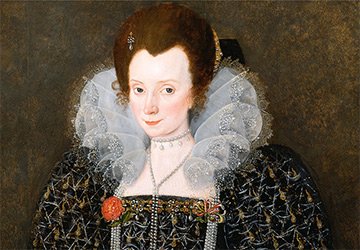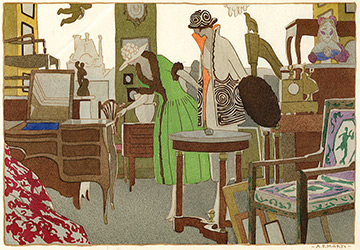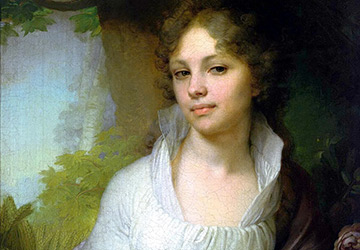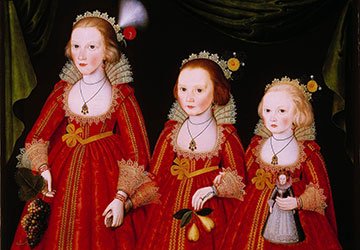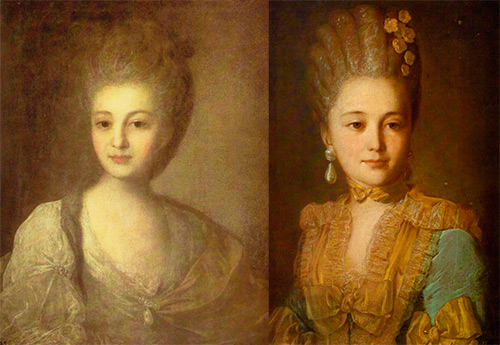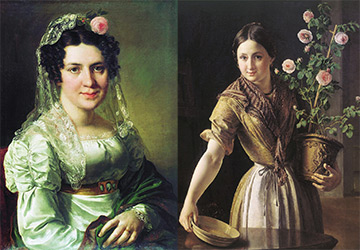Art
History in portraits of women by the artist Hau
Vladimir Ivanovich Gau was born on February 4, 1816 in Revel... Watercolourist Vladimir Gau left us an excellent gallery of portraits of his era. His works are in many museums and are the pride of collectors. An artist of the portrait genre, Hau painted many portraits of the royal family - Emperor Nicholas I, Grand Duke Mikhail Pavlovich and hundreds of portraits of the Russian nobility.
Vladimir Ivanovich Gau was born into the family of an artist. Johann Hau did not receive an art education, he became a self-taught artist and became famous in his time as a landscape painter and decorator. He taught this to his sons.
Vladimir's elder brother Eduard Hau is known as a perspectivist artist. His paintings are numerous images of the palaces of St. Petersburg and its suburbs, the Grand Kremlin Palace and its halls. In 1854, Eduard Hau became an academician “for art and knowledge in perspective painting in watercolor art”.
And little Voldemar drew from childhood too. But unlike his father and brother, he was attracted by the image of a person's face. Father did not immediately agree with this inclination of the future court painter. After all, being a portrait painter meant listening to other people's comments, finding the strength to draw in the way a capricious customer requires, and also being able to flatter him.
Therefore, first, the father sends his son to study with academician Karl von Kügelchen. The old artist lived near Revel, in the Friedheim estate. With patience and zeal, the young artist led the work, and Kugelchen saw and appreciated in him the gift of a portrait painter, and therefore managed to convince Johann not to resist the wishes of his son.
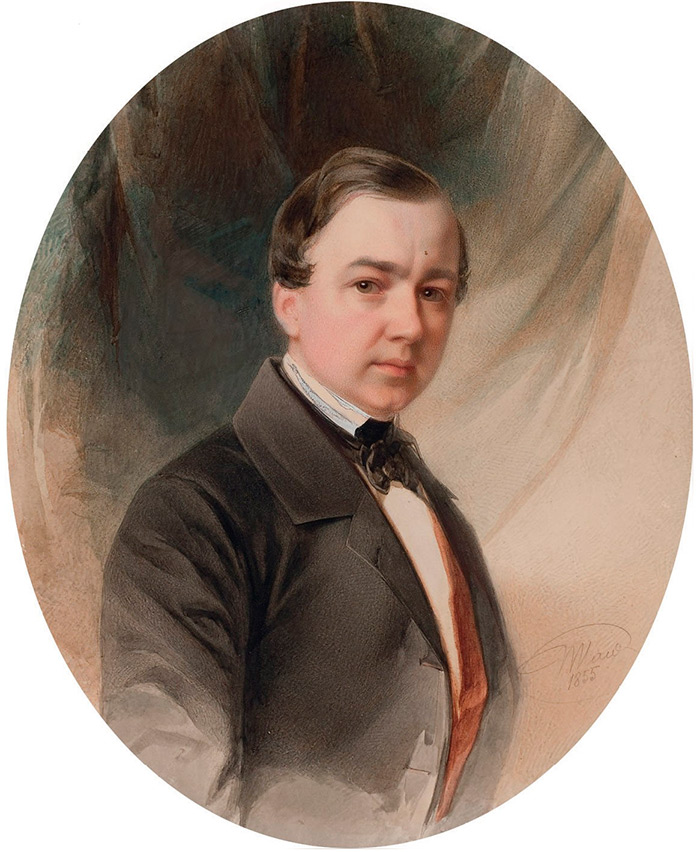
Soon, with the assistance of Kügelchen, Voldemar Hau, already at the end of the 1820s, began to receive orders for portraits, of which there were so many that the young artist barely had time to execute.
Being a portrait painter is not easy, but very honorable. Indeed, in those distant times, many wanted to preserve their image in youth or in adulthood, for themselves or as a keepsake. Therefore, everyone had great respect for the artists who knew how to paint portraits.
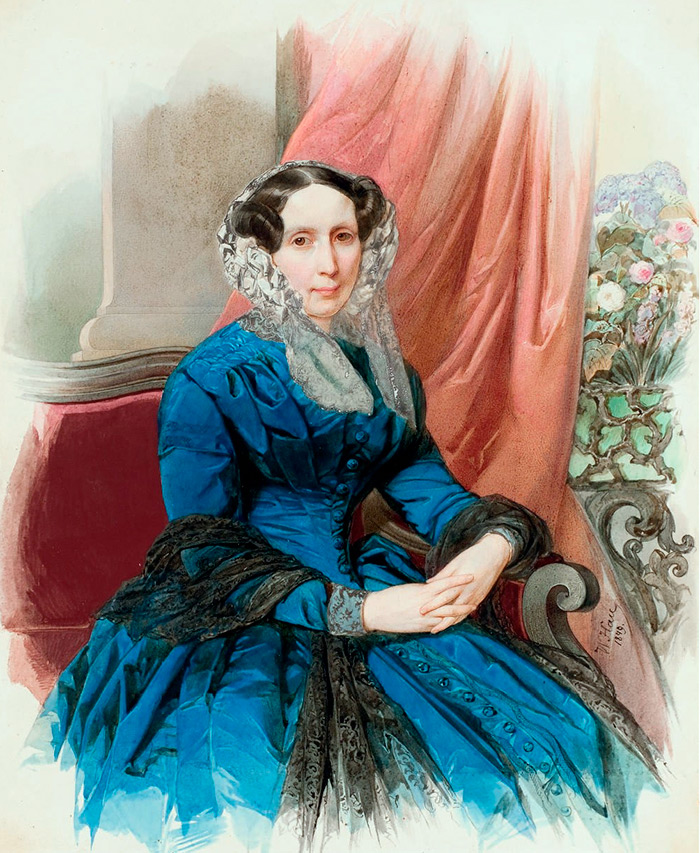
Then, and even now, they say about great artists that he paints a portrait, that he writes, and does not paint. Hence the word - painter. Voldemar Hau wanted to become such a painter who could convey the image and soul of a person.
In 1832, the royal family arrived in Revel for sea bathing. By this time, many already knew about the young artist. Therefore, it is not surprising that the rumor about him reached the imperial family. Empress Alexandra Feodorovna herself wished the artist to paint portraits of her children. When the portraits were ready, the Empress immediately realized that she was a real artist.
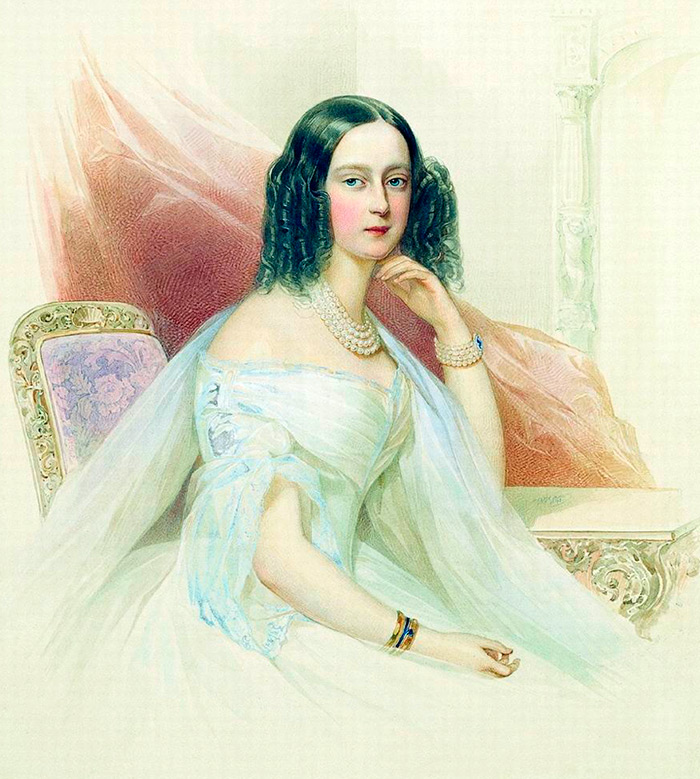
Alexandra Feodorovna took him under her patronage, and in 1832 Gau was enrolled as a free student at the Imperial Academy of Arts, and "at the expense of a high patroness." In 1835 V. Gau was invited to Tsarskoe Selo, where he painted portraits of the Grand Dukes Alexander, Constantine, Nicholas, Mikhail and the Grand Duchesses Maria, Olga and Alexandra.
In 1836, Gau painted a portrait of Alexandra Feodorovna, which became one of the best-known and best portraits of the Empress. Alexandra Feodorovna is depicted in the living room of the Cottage in Alexandria. Calm, a little tired face, the empress - she seemed to be thinking, looking in front of her. Proud erect posture, noble appearance ...
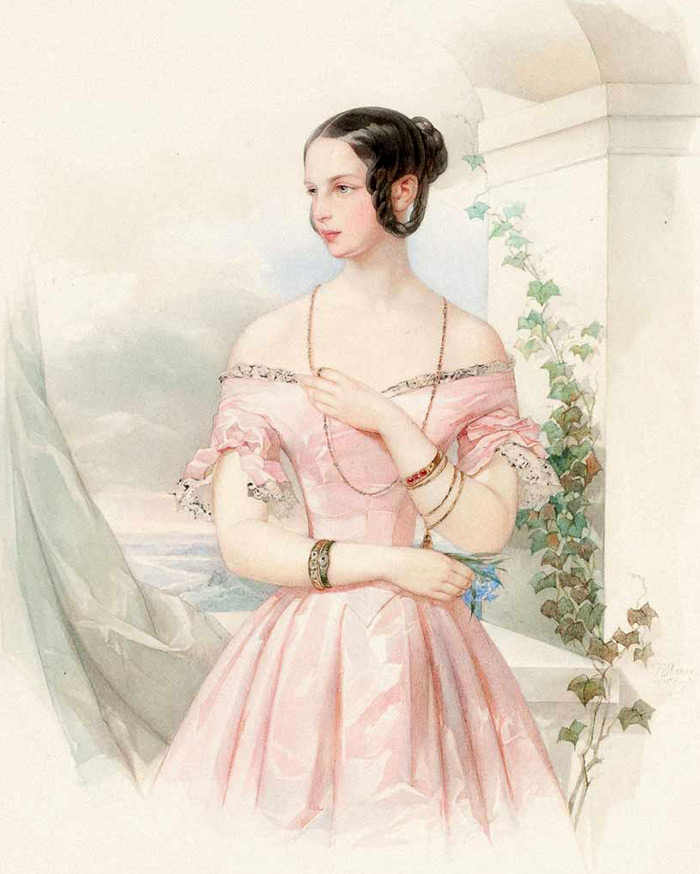
In 1836, Vladimir Gau graduated from the Academy of Arts with a large silver medal. He soon went abroad to further improve his skills.At that time, there were already well-known artists in Russia who were admired by the Russian nobility, but there was a lot to learn in Europe.
Hau visited Italy, Germany. Here he got acquainted with the works of Italian and German painters. The watercolor portrait genre was more widespread in Europe, and of a small size. These were the needs of society. Watercolourists worked at every European court. The portraits painted were often reproduced in a lithographic manner.
Returning to Russia, Vladimir Gau became a Court Painter. In 1849 he was awarded the honorary title of Academician of watercolor painting. Many secular beauties dreamed of getting a portrait by Vladimir Gau. Almost all members of the Imperial House were among his models.
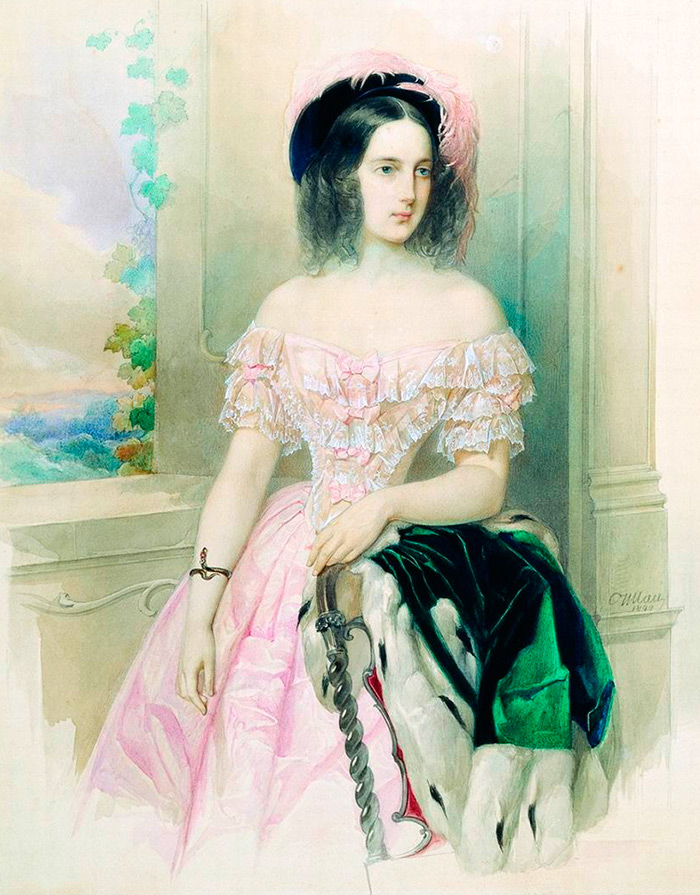
He painted portraits of the royal family and the Russian nobility, executed in the interior or in the landscape, portraits of actresses of the Imperial Theater: "the singer and true beauty" A.M. Stepanova, dramatic actress V.N. Asenkova, dancers V.P. Volkova, actress M.I. Shiryaeva. Unfortunately, not all of the portraits we can see today, some of them can only have an idea of the surviving lithographs.
Most of the portraits of V. Hau are the Russian aristocracy of the 19th century, and therefore each of the portraits depicted contains elements of aristocracy in its external manifestation. This clear, calm face, erect posture, turn of the head, clothes - all this passes from portrait to portrait.
Especially beautiful are female portraits, poetic, heartfelt and expressive. They feel a virtuoso mastery of technique, the ability to capture the characteristic features of the model. Portraits of St. Petersburg beauties ensured the artist's success in the world.
Look at any portrait of V. Hau - gentle pretty faces of women, surrounded by the magical glow of watercolors, nobility and dignity, pensive or dreamy eyes, languid expression ...
Images of Countess Emilia Musina-Pushkina, Princess A.A. Golitsyna, N.N. Pushkina, M.V. Stolypina, one of the "fashionable women of the forties", a portrait of ON. Skobeleva, mother of the outstanding Russian military leader General M.D. Skobelev, portrait of Anna Alekseevna Olenina, whom A.S. Pushkin dedicated his poems, declarations of love. "I loved you ..." or
“But, admit it yourself, whether it’s the matter
Olenina's eyes!
What a brooding genius in them,
And how much childish simplicity
And how many languid expressions
And how much bliss and dreams! ... "
Olenina's eyes!
What a brooding genius in them,
And how much childish simplicity
And how many languid expressions
And how much bliss and dreams! ... "
In 1842, Hau married Louise-Matilda-Theodore Zanftleben, the daughter of a Petersburg tailor. The artist's family had three sons and six daughters. In the collection of the Russian Museum, small pencil sketches and watercolors, given by his grandson Magnus Viktorovich Ginze, tell us about the events of his family life.
Some of Gau's family portraits are in Russia, and some abroad. The collection of the Yaroslavl Art Museum contains portraits of his eldest son Harald in infancy and three daughters - Maria, Olga and Eugenia.
Vladimir Gau is an artist of the 1840s - 1860s era. His portraits reflect the atmosphere of those years. For more than a decade, the brush of the artist Vladimir Gau has been telling us the stories of the lives of people who lived many years ago. Thanks to him, we can get in touch with the past not only of famous people, but also with the history of the country. A striking example is the portraits of Grand Duchess Elena Pavlovna.
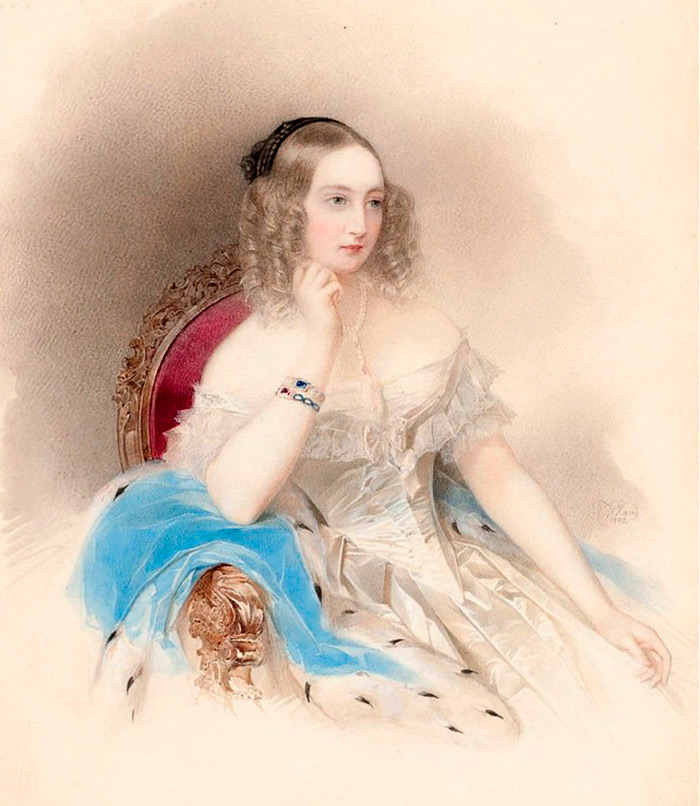
The grand duchess Elena Pavlovna, gifted with a delicate artistic taste, posed for the artist herself and appreciated his talent. Elena Pavlovna, known for her vigorous activity for the good of Russia, amazed everyone with her intelligence and strong character.
Poet VF Odoevsky wrote about her: “Everything interested her, she knew everyone, understood everything, sympathized with everything. She was always learning something. " Elena Pavlovna, being married to the Grand Duke Mikhail Pavlovich, knew how to be useful in state affairs and to the emperor himself.
When the Dowager Empress Maria Feodorovna died, according to her will, the management of the Mariinsky and Midwifery Institutes passed to Elena Pavlovna. Maria Feodorovna knew that she was transferring them into reliable hands.And indeed, from that time on, all the problems of medicine were always in the field of view of Elena Pavlovna.
This woman seemed to have everything she needed to be happy. But it only seemed to be. Grand Duke Mikhail Pavlovich was a completely different person, and the beauty and grace of his wife, whom the poets admired, did not bother him. She buried her daughters - some in infancy, and the other two - Maria and Elizabeth - died at a young age.
After that, Elena Pavlovna devoted herself entirely to social and charitable activities. It was she who created the first military community of sisters of mercy in Russia during the Crimean War. The Grand Duchess was called "Princesse la Liberte - Princess Freedom" for her activities and services in the liberation of peasants from serfdom, and Emperor Alexander II awarded Elena Pavlovna the gold medal "Worker of Reforms".
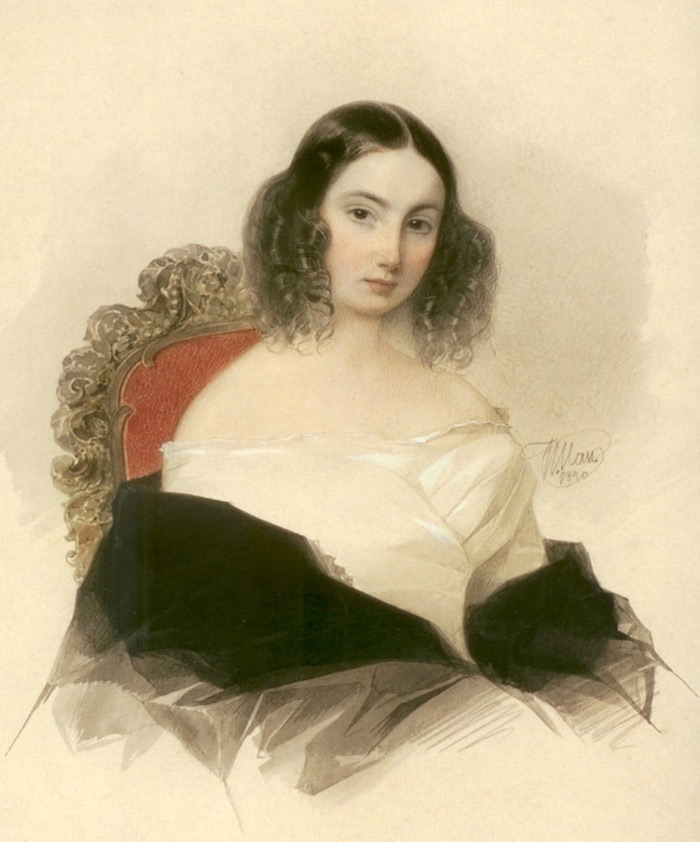
Among the hundreds of portraits painted by V. Gau, like every artist, there are excellent works, and there are also less successful ones. Many of his portraits lack the warmth, cordiality and trust that is often felt between the artist and his model.
In his portraits, one can feel some restraint, and somewhere coldness, but this is understandable. The circle of his models, or rather those portrayed, is the imperial family, courtiers, Russian nobility.
How could he feel with everyone that creative mood, silent communication and understanding that can be between the artist and the model, so necessary to fulfill the difficult task of creativity. In addition, the court artist must be ready to unconditionally fulfill any wishes of the customer, as his father warned him about.
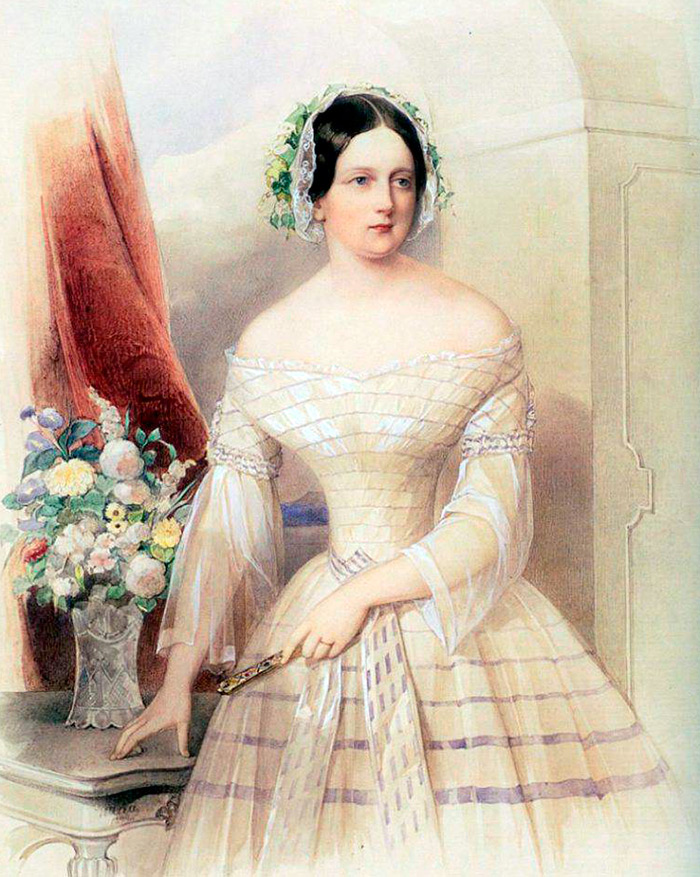
In portraits depicting people close to the artist, interest in a person, in his inner world is completely different. In the period from 1860 to 1890, the works of V.I. Gau became isolated. At this time, the watercolor portrait was supplanted by the developing photography.
Vladimir Gau, court painter of the imperial house, died on March 11, 1895, and was buried at the Smolensk Lutheran cemetery in St. Petersburg. His wife Louise Hau also rests here.
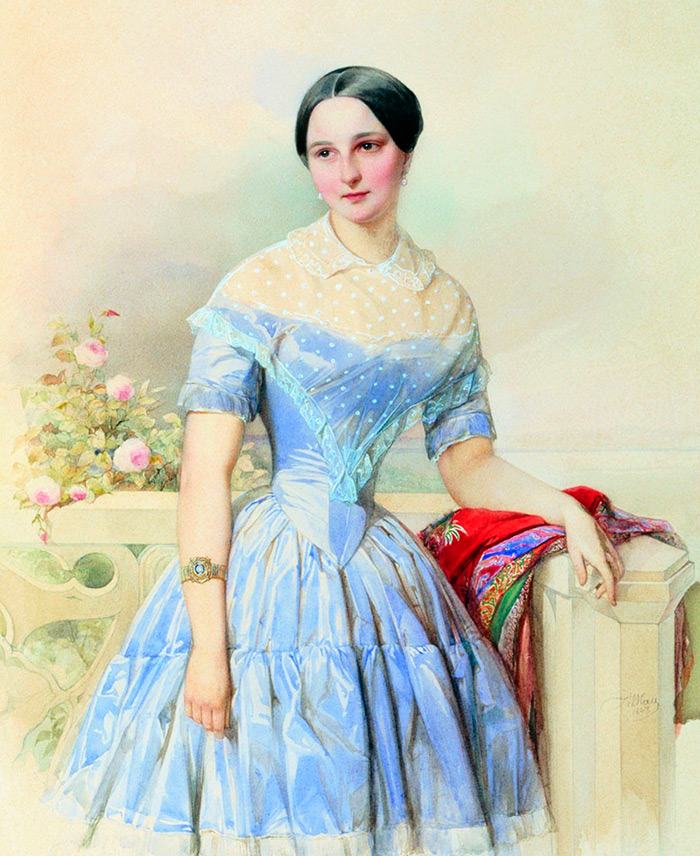
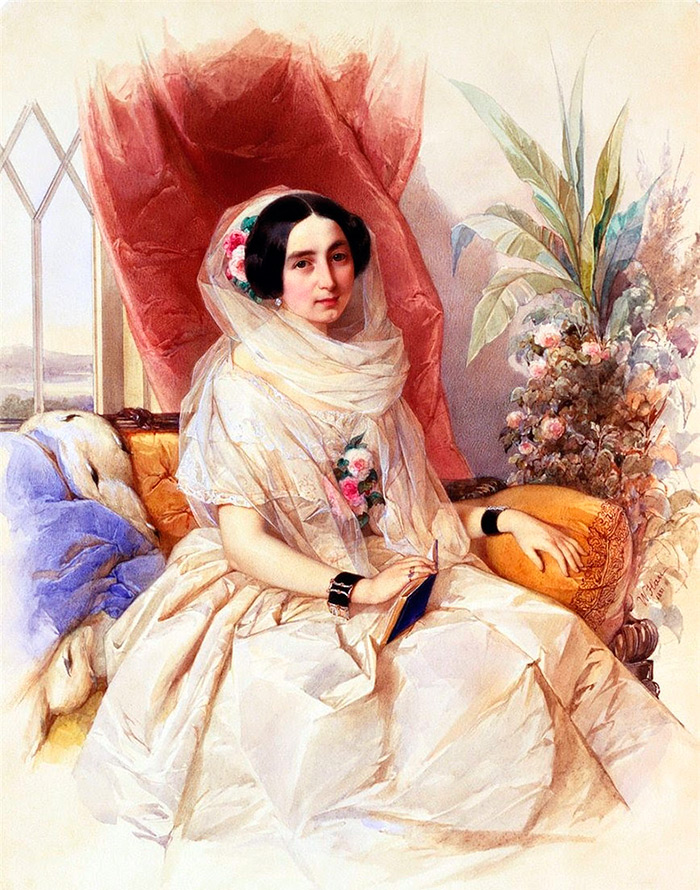
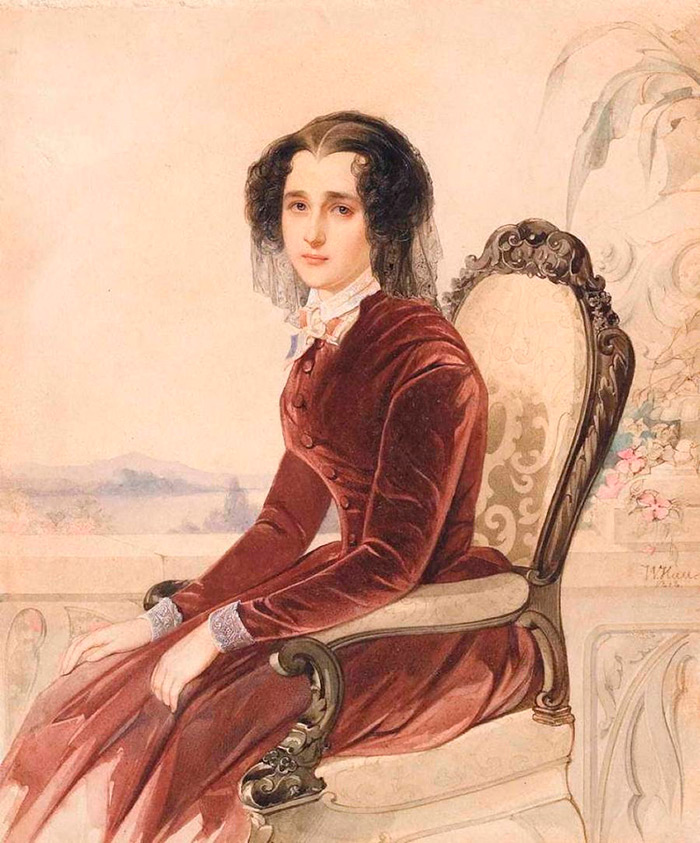
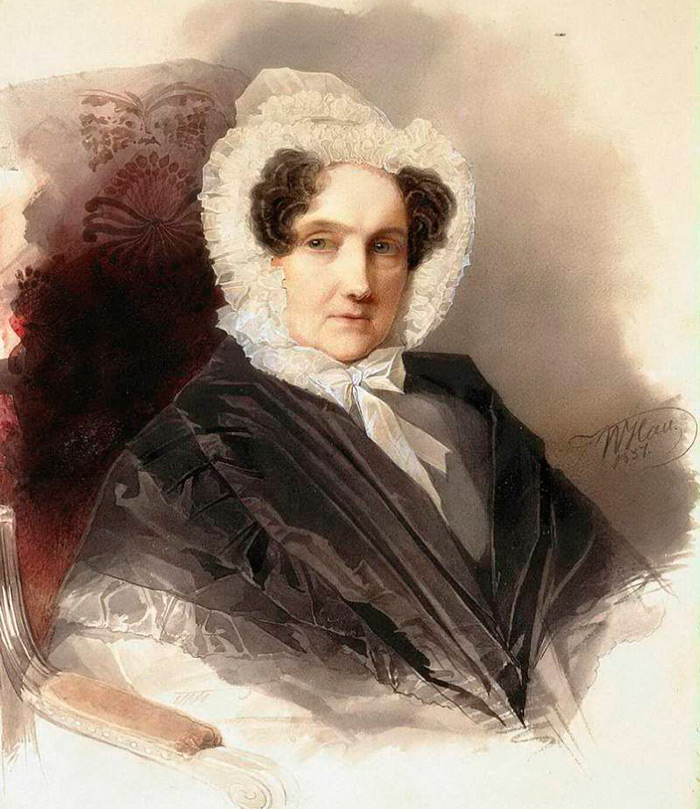
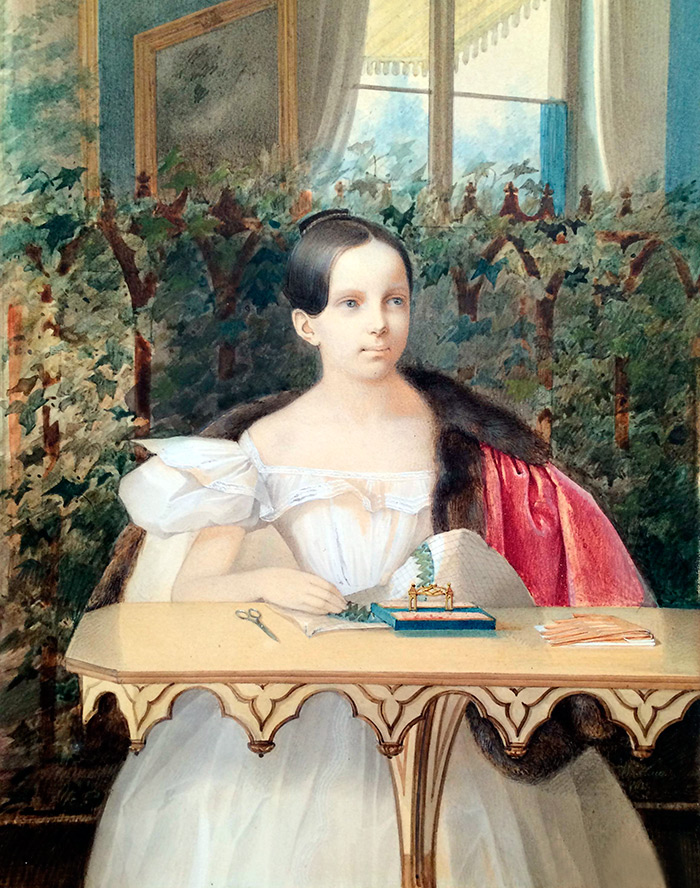
Comments and Reviews
Add a comment
Rating news
Shades of clothing that make women look younger
What shades of hair make women younger: rules and photos
Funny wedding dresses - photos and ideas
12 most expensive down jackets for the winter
How to look 25 at 40: tips from supermodels
Beautiful schoolgirls
Anti-aging haircuts and hairstyles for women
Fashionable skirts for autumn and winter
Fashionable women's trousers for the cold season
Fashionable and stylish sandals for summer 2024
Spring-summer 2024
 Fashionable dresses and tops with thin spaghetti straps
Fashionable dresses and tops with thin spaghetti straps
 Bandana tops: how to wear stylishly and beautifully
Bandana tops: how to wear stylishly and beautifully
 How to put together the perfect men's wardrobe for the summer
How to put together the perfect men's wardrobe for the summer
 Fashionable shorts for spring-summer 2024
Fashionable shorts for spring-summer 2024
 Fashionable skirts for spring-summer 2024: a guide to online shopping
Fashionable skirts for spring-summer 2024: a guide to online shopping
 The most fashionable dresses spring-summer 2024: styles and colors
The most fashionable dresses spring-summer 2024: styles and colors
 Fashionable total look 2024: ideas of images and trends
Fashionable total look 2024: ideas of images and trends
